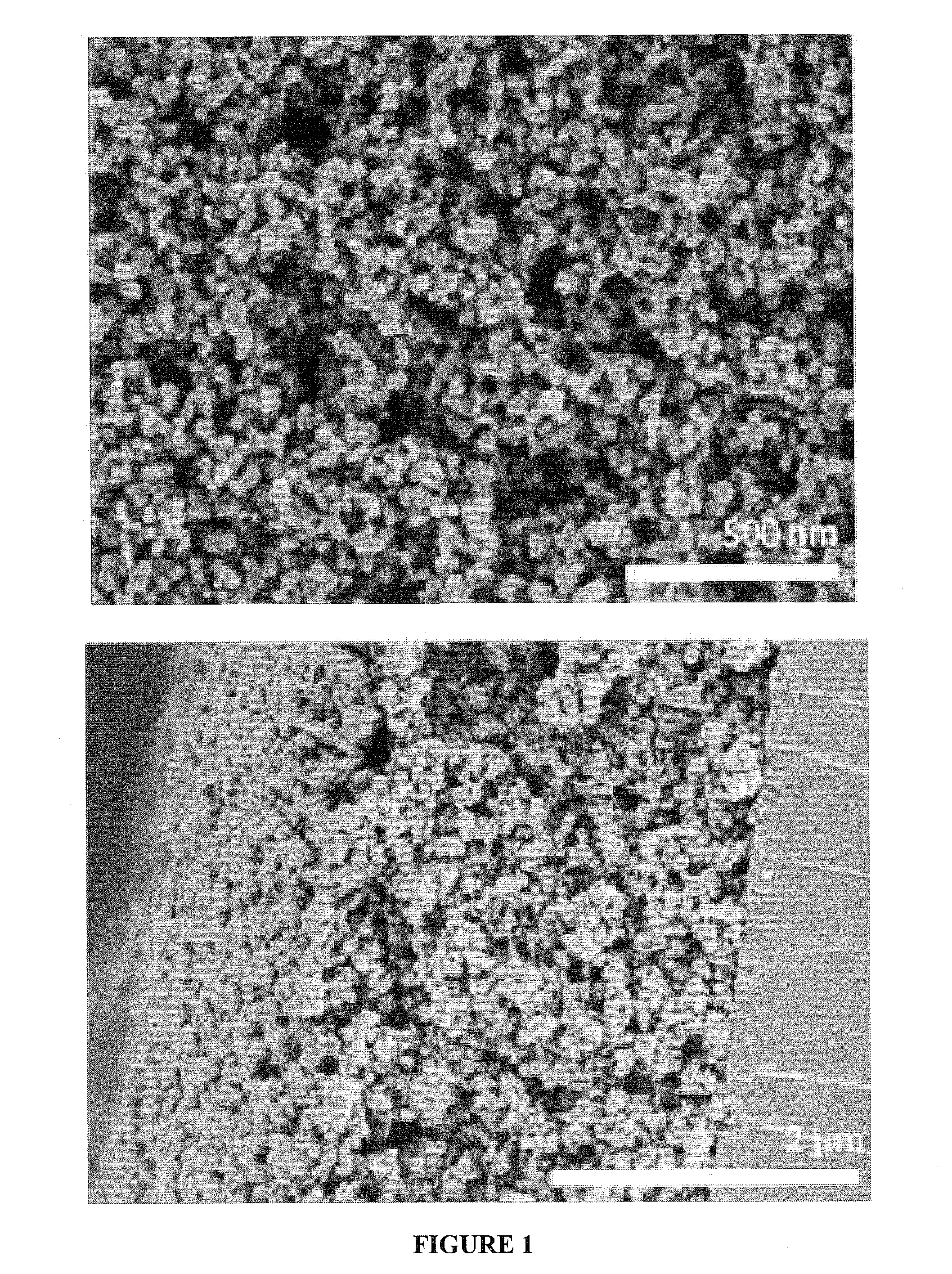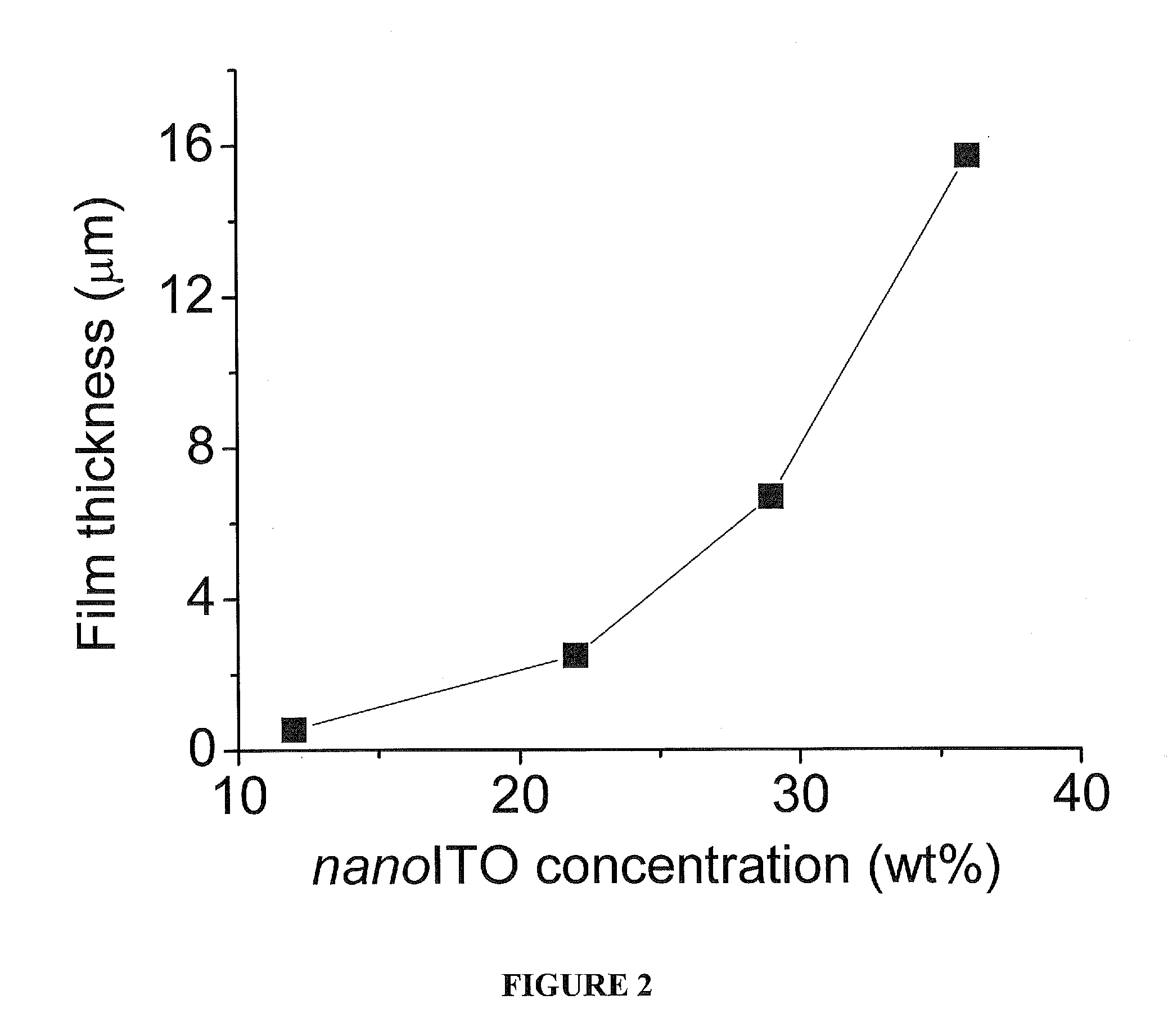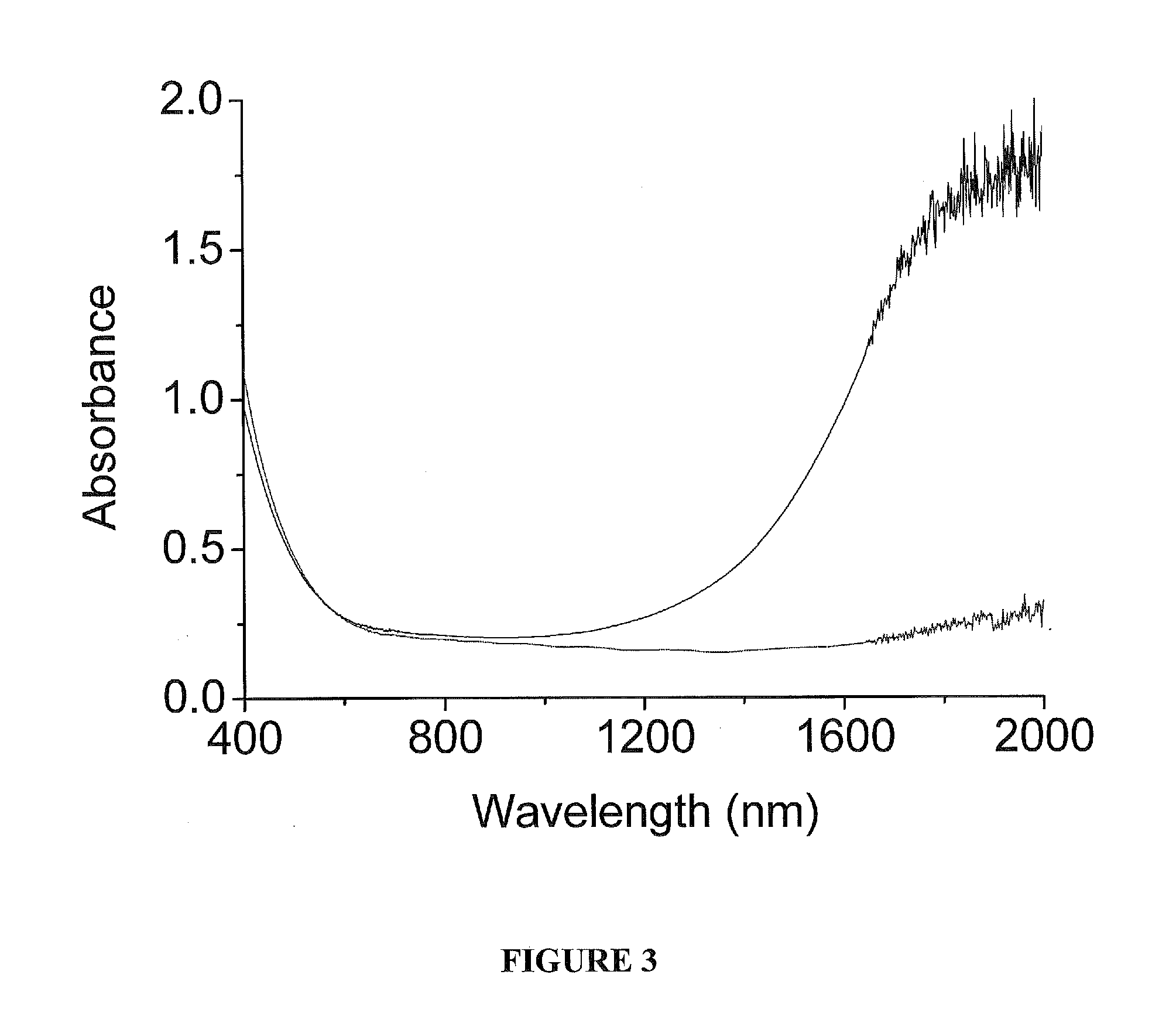Nanoparticle Electrodes and Methods of Preparation
a technology of nanoparticle electrodes and electrodes, applied in the field of electrodes, can solve the problem of little research in the field of nanoparticle electrodes using transparent conductive materials
- Summary
- Abstract
- Description
- Claims
- Application Information
AI Technical Summary
Benefits of technology
Problems solved by technology
Method used
Image
Examples
examples
General Information
[0097]Chemicals. Perchloric acid (HClO4, 70%, redistilled, trace metal grade) and tetra-n-butylammonium hexefluorophosphate (nBu4NPF6, ≧99%) was purchased from Sigma-Aldrich and used as received. [Ru(bpy)2(4,4′-PO3H2-bpy)](PF6)2 was prepared according to a literature procedure (Montalti, et al., Inorganic Chemistry 2000, 39, 76). ITO electrodes (ITO-coated glass, Rε=4-8 ohms) were obtained from Delta Technologies, Limited. NanoITO powder was obtained from Lihochem, Inc. Other chemicals were analytical reagent graded and used as received. All solutions were prepared with deionized water (Milli Q, Millipore).
[0098]Apparatus. Field emission scanning electron microscopy (FESEM) was performed on a Hitachi 4700. UV-Vis spectra were recorded on an Agilent Technologies Model 8453 diode-array spectrophotometer. Emission spectra were recorded on a Photon Technology International Inc. QuantaMaster 4SE-NIR5 with a Hamamatsu R928P PMT. Film thicknesses were measured with a Ten...
example i
NanoITO Electrodes
(a). Preparation of NanoITO Electrodes
[0099]Acetic acid (3 g) was added to 200 proof ethanol (10 mL) to afford a 5 M solution. NanoITO was then added via powder funnel (for 12 wt %, 1.5 g of the powder was added; for 22 wt %, 3 g was added, etc.). This mixture was sonicated for 20 minutes after manual shaking. The colloidal suspension was shaken further manually so that none of the powder remained at the bottom of the vial. The colloidal suspension was poured into a tall 25 mL beaker and sonicated using a Branson ultrasonic horn flat microtip (70% power, 50% duty cycle; 2-5 minutes). The suspension was allowed to cool to room temperature before further use.
[0100]2.5 cm×2.5 cm glass substrates (ITO glass, FTO glass, or borosilicate glass) were prepared and cleaned by sonication in isopropanol for 20 min followed by acetone for 20 min. Kapton tape was applied to one edge to maintain an area (˜0.3 cm×2.5 cm) to later make direct electrical contact to the underlying TC...
example ii
NanoFTO (F Doped SnO2)
[0106]FTO nanoparticle thin films by preparing FTO nanoparticle dispersions using commercial FTO nanoparticles doped with 1% fluoride were prepared. The dispersion was spin coated onto FTO glass substrates and the films were annealed at 500° C. The films displayed very high two-point resistances in the mega-ohm range. These thin films were sensitized with a Ruthenium Bisphosphonate complex and the films were used as the working electrode in a three-electrode cell. Cyclic voltammetry experiments for the sensitized FTO nanoparticle thin films revealed current levels on par with FTO glass in the absence of nanoparticles. This suggests that there is minimal conduction along the z-direction of the thin film and is consistent with highly resistive, low conductivity films. The commercial material contains nanoparticles with a very broad particle size distribution, ranging from 20 nm to 500 microns. Monodisperse FTO nanoparticles may conduct better than polydisperse ma...
PUM
| Property | Measurement | Unit |
|---|---|---|
| diameter | aaaaa | aaaaa |
| thickness | aaaaa | aaaaa |
| thickness | aaaaa | aaaaa |
Abstract
Description
Claims
Application Information
 Login to View More
Login to View More - R&D
- Intellectual Property
- Life Sciences
- Materials
- Tech Scout
- Unparalleled Data Quality
- Higher Quality Content
- 60% Fewer Hallucinations
Browse by: Latest US Patents, China's latest patents, Technical Efficacy Thesaurus, Application Domain, Technology Topic, Popular Technical Reports.
© 2025 PatSnap. All rights reserved.Legal|Privacy policy|Modern Slavery Act Transparency Statement|Sitemap|About US| Contact US: help@patsnap.com



